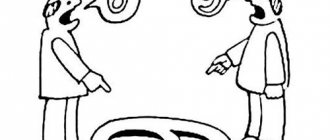Scientists have long proven that the significance of drawing in psychology is highly significant for the research being conducted. Images drawn without a purpose and negative thoughts reflect the inner world of the individual, indicating hidden experiences and worries. Because of this, psychologists often ask an adult or child to draw something on a piece of paper to obtain information. To understand how informative a regular drawing is, you need to know the decoding of individual elements, colors, and the location of the image on the sheet.
Object of study
If an adult subject systematically has problems at work or in his personal life, depression begins, or his mood changes sharply, a psychological deciphering of the person’s picture will help to establish the hidden reasons for the failures.
Elements meaning:
- A clear pattern indicates boredom.
- Inner peace and tranquility is indicated by the image of a honeycomb.
- If there are too many wavy lines, they can indicate a crisis, the presence of serious problems that prevent further development.
- Images of hearts indicate a good mood.
- Triangles are drawn by purposeful people who set goals for themselves and achieve them with any effort.
- Squares represent unemotional personalities who often hide their true feelings.
- Circles intersecting with each other indicate a lack of adequate physical activity. The personality lacks communication.
- Ovals indicate fear of conflicts, a reluctance to argue with anyone.
- Figures resembling little men in shape indicate a lack of communication.
- The sun is a symbol of sadness, sadness, melancholy.
It is important that an adult draws what he wants without any emotions or extraneous thoughts. You need to calm down in advance, try not to think about the bad
The secret of an adult's drawing
The meaning of a drawing by an adult, which is made spontaneously, tells a lot about a person, about his personality.
- Wavy lines, as well as springs, indicate a difficult life situation. This person is stuck in their problems or confused.
- Grid - a person finds himself in a situation that is incomprehensible and new to him.
- Although the sun and This is how people express their feelings, show that they are lonely and need support.
- Heart – indicates joy and happiness.
- People - in this way a person tries to shift all responsibility onto another person in order to protect himself from unnecessary work and problems.
- The same type of drawings speaks of melancholy.
- Home – fatigue, aggressive attitude towards others, desire to relax in a good environment.
House
- Chess is depicted by people who find themselves in an uncertain and difficult situation. At the moment they don't know what the right decision will be.
- Honeycomb - there is harmony and peace inside.
- Geometric shapes - this person is self-confident and knows exactly how to get out of a given situation.
Principles of Image Analysis
To analyze a drawing of an adult subject, it is necessary to pay attention to many factors:
- composition construction;
- arrangement of figures on a sheet of paper;
- color scheme;
- line composition;
- proportions of objects;
- method of drawing individual elements;
- degree of meaningfulness of the image;
- pressure force;
- the presence of additional touches.
Features of the drawing personality:
- Interpersonal relationships with other people.
- Emotional condition.
- Degree of intellectual development.
- Individual self-esteem.
- Features of temperament.
- Possible motivation.
- Degree of development of fantasy.
Other
Violations of proportions in relation to the right and left sides indicate a lack of personal balance. Distortions on the right side reflect problems in relationships with the world of social norms and those people who embody them. Distortions on the left side of the body reflect problems in relationships with the closest people, in the area of emotional attachment.
Fragmentation of body parts. The refusal to create a holistic drawing is observed in children with serious disabilities and is an indicator of their personal disorganization.
Additional details
A weapon in the hands of a drawn figure is interpreted as a sign of a hostile, aggressive attitude.
Buttons in the drawings of older children may indicate a lack of maturity and immaturity.
The same may be indicated by the appearance of pockets.
Focusing on elements such as a tie and hat is generally believed to have sexual overtones.
Other sexual symbols include a pipe, a cigarette and, less commonly, a cane.
Swelling of the fly on trousers can be observed in teenagers who are preoccupied with masturbation.
If the figure is decorated with additional accessories (bows, buckles, etc.), this means increased attention to one’s own person.
Based on materials:
https://www.nanya.ru/ (S. Stepanov)
https://podrujka.net/
https://testoteka.narod.ru/
https://psiholognew.com/
https://domensu.ru/
Decoding the image
A psychologist will accurately decipher the drawing of an adult, but if you wish, you can try to do it yourself. The effectiveness of this psychological test is determined by two features:
- Hand movements depend on momentary emotions that can characterize a person’s inner world. This is explained by a simple example of gesturing. When communication occurs between two people, information is transmitted not only through conversation, but also non-verbally. Thanks to this, hand movements can say a lot about character.
- Usually the drawings reflect the inner experiences and aspirations of the individual. Images are a special way of communicating with the outside world. For example, when communicating with others, the conversation must be filtered through a series of filters to avoid saying something wrong. Drawing frees a person from limitations.
Typically, deciphering children's drawings is considered a more effective practice. This is due to the fact that the child saturates the image with a large number of colors and shapes, which can be used as a starting point for analysis.
Answers
Portrait of a girl
If the first thing that caught your eye was the girl's face, then you are tired. Take a break, relax, your body needs rest.
Most likely, your environment or inability to refuse takes too much strength from you. You are certainly a kind and helpful person, that’s wonderful, but don’t forget about your health.
Spending more time for yourself will help you get rid of stress.
Horses or landscape
Most often, people in love or those who will soon enter into a serious relationship see this first.
Don’t forget that any relationship is work, and first of all, on yourself.
And another piece of advice: always be yourself, don’t pretend.
Bird or mountains
If the first thing you saw were birds or mountains, then you don't believe in yourself enough. By the way, in vain. You deserve all the best in this world. Don't give your well-deserved reward to other people. It's within your power!
Start doing more for yourself and you will see how much people appreciate you.
Psychological tests - Take online.
Location
The location of the picture on the sheet indicates values and character traits. Explanation:
- Location on the right. Denotes aspiration towards the future. The subject desires changes that change his usual life for the better. The current state of affairs does not bring satisfaction.
- The location of the picture at the bottom of the sheet. Indicates low self-esteem of the individual. An individual cannot realize himself 100%; complexities in communication appear.
- The figures are located on two edges of the sheet. Indicates dissatisfaction with certain aspects of life, dissatisfaction.
- The location of the drawing is on the left side of the sheet. Indicates a nostalgic mood, conservatism of views. Such a person does not pay attention to the present, lives in the past. Personalities who draw figures in the center of the sheet are harmonious.
What else do psychologists pay attention to?
Psychologists also pay attention to whether the author made attempts to correct the drawing. For example, if he erased and redrew it repeatedly, this indicates anxiety and restlessness. It may also mean that the person is prone to perfectionism.
If the drawing has clear lines, then the person who depicted it has a direct and decisive character, but weak lines, on the contrary, indicate compliance and indecisiveness.
Strokes can tell a lot. Thus, long strokes are characteristic of calm people, and short strokes are characteristic of impulsive people.
Drawings allow psychologists to understand a lot about a person’s personality and anxieties. However, this is not the most important and not the most accurate method of drawing up a psychological portrait.
Size value
The sizes of individual forms and the overall composition indicate self-esteem. Explanation:
- Drawings that take up all the free space on the sheet indicate that the person cannot achieve anything in life and tries to compensate for this with an image. More often these are extroverted people who cannot truly realize themselves in their endeavors.
- Large drawings indicate high self-esteem. Very large figures may indicate that the subject is characterized by excessive pride, vanity, and arrogance. The deep reason for the manifestation of these feelings is dissatisfaction with the usual life.
- A large amount of empty space on a sheet of paper is typical for introverts. Such people are constrained, pressed into themselves, afraid of something new. They do not trust others and are afraid to make mistakes.
Drawing test “Choose a figure”
The sheet depicts a square, triangle, rectangle, circle and zigzag . A person is asked to first choose one figure that he associates with himself, and then arrange the remaining elements in order of personal preference. The psychological response consists of two components: the figure chosen first characterizes the dominant personality traits, the remaining details complement the image.
the square first . Such people always finish what they start with perseverance and diligence; they have excellent memory and a sense of responsibility. Idealists do not lose sight of any details and like to “put everything on the shelf.” Undoubtedly, such qualities are useful at work, but they are very annoying in their personal life. Family happiness is guaranteed if you manage to find a soul mate with the same character.
The triangle is chosen by true leaders, strong, courageous, energetic, self-confident, able to soberly assess the situation and sensibly analyze what is happening. In all areas of life, these people reserve the right to a decisive vote, do not change their decisions and do not know how to admit their own mistakes. All life is spent in competition and struggle for first place.
Personalities - “ rectangles ” are in a state of constant change. They are inconsistent and unpredictable, always dissatisfied with something and always looking for something better. Naivety and curiosity generate not only a keen interest in everything unknown, but also incredible courage. Therefore, such people are rarely alone.
Those who choose the circle always strive for harmony. Through the efforts of these philanthropists, a friendly atmosphere in the work team and a favorable atmosphere in the family union are maintained. They know how to listen and support, are very sensitive and insightful. Psychology can become their life's work.
An open zigzag is a preference for creative creative people. They are often expressive and eccentric, almost always naive and impractical. Excellent intuition, a subtle sense of humor and the ability to find a common language with everyone compensate for shortcomings.
Applicable colors
This parameter is considered the main one when analyzing images that children draw. Adults typically draw with one pencil, but it is possible to draw with different colors. Meaning of flowers:
- Shades of yellow speak of comfort and tranquility.
- The color purple denotes the development of imagination and fantasy.
- Shades of red can indicate excessive aggression and impulsiveness. Such people constantly splash out accumulated energy on others.
- Gray color - the routine of monotony overcomes a person, he needs something new.
- Black speaks of a depressed state, strong internal experiences that can cause depression. The individual needs to identify an internal problem and cope with it.
- The color blue represents self-absorption. The individual is thinking about how to solve a problem from the past so as not to worry about it in the present-future.
- Shades of green indicate stubbornness, self-sufficiency, independence, and the desire to assert oneself.
Many are characterized by shading of individual elements of the picture. If there is shading, the subject feels squeezed within the framework, he does not feel freedom. If there is no shading, the person is ready to develop further and will accept changes.
Large psychological dictionary online
We also provide our clients with a wide range of psychological services - psychological counseling, psychotherapy, psychodiagnostics, psychotraining, transformation games, etc. for both individuals and organizations.
We also invite you to our new website mvya.ru
☏ Tel. Viber and WhatsApp: +7 (985) 920-07-50. You can get advice from a psychologist, wherever you are, with the service of our Center, psychologist help via Skype.
| Large dictionary of psychology, best psychological dictionary and meanings of psychological terms |
Welcome to the psychological dictionary, and we also offer a new service - free consultation and assistance for pensioners! Free visit to a psychologist for university students!
Center specialists
Torletsky Sergey Aleksandrovich Sports psychologist consultant Coach.
Protasova Maria Dmitrievna Psychologist in the field of self-development, personal trainer.
Mezhenina Olga Petrovna Family psychologist consultant.
Chulyukanova Yulia Mikhailovna Psychoanalyst, analytical psychology.
Grigorieva Elena Vladimirovna Gestalt therapist in relationship psychology.
All wordsABVGDEZHZIKLMNOPRSTUFHTSCHSHEYYA
| Word | Description |
| SYMBOL | SYMBOL is an image that is a representative of other - usually very diverse - images, contents and relationships. The concept of a symbol is related to the concept of a sign, but they should be distinguished. For a sign, especially in formal-logical systems, polysemy is a negative phenomenon: the more unambiguously a sign is understood, the more constructively it can be used. The more polysemantic a symbol is, the more meaningful it is. Symbol is one of the most important categories of art, philosophy and psychology. In general psychology, the category of symbol was developed in detail in psychoanalysis and interactionism. Orthodox psychoanalysis is characterized by the interpretation of symbols as unconscious, predominantly sexual images that determine the structure and functioning of mental processes. Psychoanalysts have offered interpretations for a number of symbols found in dreams. Later in psychoanalysis the focus was shifted to the analysis and interpretation of symbols of social and historical origin. Thus, in deep psychology, the collective unconscious was highlighted as a reflection of the experience of previous generations, embodied in archetypes - universal human prototypes. Archetypes are inaccessible to direct observation and are revealed only indirectly - through their projection onto external objects, which manifests itself in universal human symbolism - myths, beliefs, dreams, works of art. An interpretation of a number of symbols was proposed - embodiments of archetypes: mother earth, hero, wise old man, etc. From the position of materialism, the important role of symbols for the functioning of the psyche is recognized, but their indeterministic, idealistic interpretation, proposed, in particular, in psychoanalysis and interactionism, is rejected. Without ignoring the facts studied by these directions, domestic psychology did not accept their interpretation of symbols as phenomena divorced from the structure of real socio-economic relations existing in society. A true analysis of a system of symbols is possible only when their origin is shown from the social system, and ultimately - through a number of mediating links - from the system of material, production activity. |
ABVGDEZHZIKLMNOPRSTUFHTSCHSHEYYA
Line types
Lines can tell a lot about a character. They can have sharp corners, be semicircular, sinuous, discontinuous or solid. The line decoding method is suitable for testing children and adults. Designations:
- Broken line - unstable position, lack of self-confidence.
- A large number of sharp corners indicates hidden aggression.
- Large voluminous figures indicate emotional openness and a broad outlook.
- The figures are small, narrow - the desire to adhere to the rules, modesty, enslavement.
- Soft curves, rounded lines - more often women draw images with such elements. They indicate a person's flexibility in making various decisions.
- Geometric shapes—difficulty in perceiving change, the presence of aggression.
- Fine lines applied without pressure. The individual wants to distance himself from society and does not want to communicate with others. This manifests itself in attempts to avoid attention from the environment.
- Lines drawn with pressure. They indicate a person’s desire to stand out among others.
- Solid lines - flexibility, confidence, emotional stability. Such individuals are ready to cope with any difficulties to achieve their goals.
Neck
Symbolizes the ability of self-control of the head over feelings.
Therefore, the neck area is given attention by those who are concerned about the relationship between bodily impulses and conscious control.
- excessively large neck - awareness of bodily impulses, the desire to control them;
- long thin neck - strict self-control, tightness, desire to withdraw from the world of one’s own strong emotions;
- short thick neck - straightforwardness, naturalness, concessions to one’s weaknesses and desires.
- the absence of a neck is a sign of immaturity (in the case of small children this is normal).
The meaning of drawn objects
Decoding the overall picture depends on what objects or figures the person drew. Designations:
- Landscape without people. Lack of understanding of others, difficulty communicating with other people.
- Subject drawings. The nature is active, decisive, ambitious.
- Images of animals and people. Desire to receive more communication. In addition, the subject may have serious problems that he cannot solve alone and needs support.
- Repeating objects, shapes, ornaments. Such individuals try to hide their experiences and do not want to communicate openly.
A psychological portrait helps a psychologist see a person’s inner world, identify hidden disorders and desires. If you wish, you can use the practice yourself. To do this, you need to draw a picture without extraneous thoughts, decipher its individual details.
Paint your self-portrait
The test task is quite simple and sounds like this: “Take a simple pencil or pen, a sheet of paper, size 10x15, and draw on paper yourself, alone, and possibly with your family or colleagues. Your artistic ability doesn't matter."
Interpretation based on the elements of the picture:
Head
A large head speaks of a person’s great intellectual pretensions or, conversely, of dissatisfaction with the development of intelligence. A small head indicates inadequacy of judgment regarding one’s intellectual or social capabilities.
Eyes
Large eyes characterize suspicion, as well as strong dependence on public opinion. Small or closed eyes indicate increased concentration on one’s personality or a closed person.
Ears and nose
Enlarged ears indicate high sensitivity to criticism. If the nose is highlighted as a prominent accent of appearance, this indicates sexual problems. Strongly prominent nostrils are evidence of aggression.
Mouth
A prominent mouth may indicate speech problems. If the mouth is not drawn at all, then this means a negative mental state, perhaps depression, or simply lethargy in communication.
Hands
They are a symbol of human contact with society and the world as a whole. Shackled hands indicate rigidity, isolation, and increased demands on oneself. Lethargic hands indicate a person’s general ineffectiveness. Weak, fragile hands suggest lack of self-confidence. Long and strong arms, on the contrary, speak of strength and ambition. Very short arms are evidence of feelings of inadequacy.
Legs
Large feet indicate a need for security. The longer the legs, the more expressed the desire to be independent. The absence of legs suggests instability, a feeling of emptiness, a lack of foundation in life.
Interpretation by image type:
- Schematic illustration. The image in the form of general details and diagrams belongs to people of an intellectual disposition, “thinkers”, for whom general information about various phenomena plays the most important role.
- Realistic image. This is a detailed drawing of appearance, characteristic of a pedantic person, prone to deep analysis and constant clarification.
- Image-metaphor. A person draws himself not as a person, but as some object, creature or phenomenon, for example, an animal, rain, a mug, a character in a film or book. This indicates developed creativity, artistic talent, developed imagination and creative abilities. Such a person has a good sense of humor.
- Portrait in the interior. A person draws himself against the backdrop of a landscape, in certain circumstances. surrounded by various objects. This speaks of extraversion, a desire to be surrounded by other people.
- Emotional portrait. A picture of yourself in a certain emotional state. This indicates high emotionality and sensitivity, and a tendency to deep self-reflection. Often a person draws the opposite emotion: he is sad, but depicts himself with a smile on his face.
- Portrait image from the back. Instead of a face, a person draws the back of his head, which speaks of internal contradiction and a desire to demonstrate his individuality. This may also indicate a reluctance to depict certain details, such as the face.
- Aesthetic image. Characteristic of people with developed artistic abilities and aesthetic taste.
A short story about “What your drawings say”:
True story
In ancient Greek, the word psyche (as we mentioned earlier) meant butterfly. This insect was also a symbol of the breath of life and the life-giving wind. Gradually, thanks to the influence of the Roman Empire, the word turned out to be a symbol of the human soul. What the Greeks and Romans meant by the word "psyche" was our life force, also known as "ka" in Egyptian culture. All this, however, has a very indirect relationship to the question of what the symbol of psychology means.
The Greeks and Romans had a special view of the soul when it came to people. One of their beliefs was that when someone died, this "ka" that the Egyptians spoke of would leave their body, turning into an entity in the form of a clot of air. This clot then takes the shape of a butterfly. To the Greeks and Romans, butterflies symbolized light, change and hope.
Descent to Hades
Mad, desperate and frustrated, the daughter of the King of Anatolia went to Aphrodite to ask for help. Eros's mother saw this as an opportunity to gain the upper hand over her. She saw Psyche's visit as a chance to rid the world of this girl who dared to compete with the goddess of beauty. She gave her four tests that Psyche had to pass in order to earn the love and forgiveness of Eros. But the trials included entering the underworld, meeting Cerberus, traveling with Charon, and then talking to Hades to eventually get to Persephone and ask her for some special beautiful thing that she kept in a small box. Her story reminds us of the deep meaning of the graphic symbol of psychology.
Against all odds, the quick-witted Psyche has proven that she is not only beautiful. She was smart, brave and determined. But when she completed each task and received the Persephone box, she was overcome by vanity and curiosity. She decided to open the box to see what was inside and take for herself this mysterious beautiful object that was kept there. And after that she immediately went blind. Fortunately, Eros came to her aid, forgave Psyche, and cured her of blindness. This story is often mentioned in the context of symbols in psychology subjects.
Connection with mythology
In Greek mythology, the word psyche means more than just a butterfly, the soul and the mind. Psyche was also a goddess, a beautiful creature with butterfly wings. Her love story is one of the most beautiful love stories of all time and was immortalized by Apuleius in the Metamorphoses.
According to history, among the three daughters of the King of Anatolia, there was a girl who was truly special. She was so delicate, attractive and full of joy that even Aphrodite herself began to envy her, seeing her as her rival. She was so desperately jealous that she immediately persuaded her son, Eros (Cupid), to hit her with his arrows. She wanted young Psyche to marry the most terrible, ugliest and heartless man in all of Anatolia.
Autism
Autism is a disorder of brain development characterized by severe and pervasive deficits in social interaction, as well as restricted interests and repetitive behaviors. All of these signs begin to appear before the age of 3 years.
According to data from the United States, in 2011-2012, autism and autism spectrum disorders were officially diagnosed in 2% of schoolchildren, up from 1.2% in 2007.
Obsessive-compulsive disorder (OCD)
With OCD, the patient involuntarily experiences intrusive, disturbing or frightening thoughts (so-called obsessions). He constantly and unsuccessfully tries to get rid of anxiety caused by thoughts through equally obsessive and tiresome actions (compulsions). Sometimes obsessive (mainly obsessive thoughts) and separately compulsive (mainly obsessive actions) disorders are distinguished.
Obsessive-compulsive disorder most often begins between the ages of 10 and 30. However, the first visit to a psychiatrist usually occurs only between 25 and 35 years. The average age of hospitalization was 31.6 years.
The prevalence of OCD is also associated with educational level. The incidence of the disease is lower in those who have completed higher education (1.9%) than in those without higher education (3.4%).
Symbols and images in psychology
Some symbols are quite universal. Many people from different cultures around the planet assign the same meanings to the same symbols. Water symbolizes birth, purification and rejuvenation. The house represents the self, the self, the personality, the ego. The circle indicates unity and eternity. Carl Jung, the famous psychological theorist, called these images “archetypes.” They represent universal patterns of human thought that reside in our collective unconscious. Instinctively we react to these images, although we may not always be aware of this reaction. Some of these symbols stem from pagan beliefs about nature. Others may have evolved from the most basic elements of human psychology, culture and spirituality. One way or another, decoding symbols in psychology is a very exciting activity.
Interpretations of symbols can also be unique. People from different cultures and backgrounds can, among other things, assign different meanings to symbols. For example, colors, which can be highly symbolic, vary in meaning from one culture to another. In one culture, black may be a color associated with death; in another, the color of death may be white. People can also have their own personal symbols based on their unique personality and history. If you saw a small bird die next to a rose bush, you may associate roses with death.
Borderline personality disorder
Borderline personality disorder is characterized by impulsivity, low self-control, emotional instability, unstable connection with reality, high anxiety and severe levels of desocialization.
It occurs in 1-3% of the US adult population, of which 75% are women. 50-70% of patients with this disorder are found to abuse alcohol or drugs.
An important sign of the disorder is suicidal or self-harmful behavior, the percentage of completed suicides is about 28-30%.
Great love story
But things didn't go according to plan. Instead, it was her son, Eros, who fell in love with Psyche. Unable to stop, the young god decided to go to her room every night to conquer her and make her his. Psyche fell in love with a mysterious stranger who visited her every night. She didn't even see his face. The stranger was a god who wanted to keep his identity a secret.
But something went wrong. When Psyche told her sisters about this, they told her that she must break off the relationship until she saw the face of her mysterious lover. So she did. While Eros slept in her bed, she brought the lamp to his face. At that moment, the son of Aphrodite woke up and lost his temper, completely furious at Psyche's insolence.
Post-traumatic stress syndrome
Post-traumatic stress syndrome – (also known as “Vietnam syndrome”, “Afghan syndrome”, etc.) is a severe mental condition that occurs as a result of a single or repeated traumatic situation, such as participation in hostilities, severe physical trauma, sexual violence or death threat.
A group of characteristic symptoms - psychopathological experiences, avoidance or loss of memory of traumatic events and a high level of anxiety persists for more than a month after psychological trauma.
The effectiveness of cognitive psychotherapy for post-traumatic syndrome has been proven: the use of cognitive therapy in women who have experienced severe stress, clinical improvement was observed in 85% of patients and, in particular, was manifested by a significant decrease in scores on the depression scale - even in those women who experienced stress in childhood.
Depression
Depression is a mental disorder characterized by the “depressive triad”: decreased mood and loss of the ability to experience joy, impaired thinking (negative judgments, a pessimistic view of what is happening, and so on), and motor retardation.
Currently, depression is the most common mental disorder. It affects every 10th person over the age of 40, two thirds of them are women. Among people over 65 years of age, depression is 3 times more common. Also, about 5% of children and adolescents aged 10-16 years are susceptible to depression and depressive conditions.
Read recipes for depression in the text “Depression is Canceled.”











